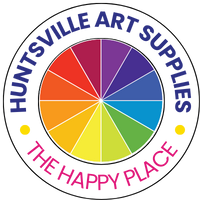Golden SoFlat Matte Acrylic, 2 oz., Light Green Yellow
Golden SoFlat Matte Acrylic, 2 oz., Light Green Yellow
Out of stock
Couldn't load pickup availability
SoFlat Matte Acrylic delivers an unmatched combination of intense matte color with enhanced leveling and opacity. The paint is formulated to make it easier for you to create uniform fields of rich matte color in fewer layers than Golden's other color lines. Ideal for creating large, graphic, matte and flat works of art: the matte surface is free of glare or brushstrokes for creating uninterrupted fields of intense color. Artwork created with SoFlat shows up beautifully in photographs and looks fantastic online.
- Smooth, fluid consistency and saturated color dries to an even, glare-free surface
- Achieve uniform fields of rich color with archival performance in indoor applications
- 100% acrylic and compatible with other Golden paints and mediums
This color contains the following pigments:
- PY184-Bismuth Yellow
- PW6-Titanium White
- PG7-Phthalo Green
Pigment Name
PY184-Bismuth Yellow
Pigment Type
inorganic
Chemical Name
bismuth orthovanadate or bismuth vanadium oxide
Chemical Formula
BiVO4
Properties
Bismuth Yellow is an intense, light value, semi-opaque yellow pigment with good tinting strength.
Permanence
Bismuth Yellow has excellent lightfastness.
Toxicity
Bismuth orthovanadate is harmful if swallowed. It is irritating to the eyes, respiratory system, and skin. Exposure may cause conjunctivitis, rhinitis, and reversible irritation of the respiratory tract. More severe cases may cause bronchitis, bronchospas
History
Bismuth orthovanadate occurs naturally in several minerals. Although it was synthesized in the 1920s, it was not developed as a commercial pigment until the 1970s.
Pigment Name
PW6-Titanium White
Pigment Type
inorganic
Chemical Name
titanium dioxide
Chemical Formula
TiO2
Properties
Titanium White is the most brilliant of the white pigments. It is considered an all purpose oil color useful in all techniques and the best all around white. Its mass-tone is neither warm nor cool, placing it somewhere between Lead White and Zinc White. It is less prone to cracking and yellowing than Lead White, but it still yellows easily. Titanium White dries slowly in oil form, more slowly than Lead White but more quickly than Zinc White. It is opaque in oil and acrylic forms and semi-opaque in watercolor form. This pigment has good chemical stability, and its tinting strength is superior to both Lead White and Zinc White.
Permanence
Titanium White has excellent permanence and lightfastness.
Toxicity
Titanium dioxide is highly stable and is regarded as non-toxic.
History
Titanium is the ninth most abundant element in the Earth's crust, however mineral deposits that are economical to mine are less common. Titanium dioxide was first discovered in 1821, although it could not be mass produced until 1919. Widespread use of the pigment began in the 1940s. Since that time, it has become the most commonly used white pigment. The name comes from the Latin word Titan, the name for the elder brother of Kronos and ancestor of the Titans, and from the Greek word tito, meaning day or sun.
Pigment Name
PG7-Phthalo Green
Pigment Type
organic
Chemical Name
polychlorinated copper(II) phthalocyanine
Chemical Formula
C32H3Cl13CuN8 to C32HCl15CuN8 or C32H16CuN8Cl15 (PG7) or C32Br6Cl10CuN8 (PG36)
Properties
Phthalo Green is a transparent, cool, bright, high intensity color used in oil and acrylics. It comes from a Phthalocyanine Blue pigment where most of the hydrogen atoms have been replaced with chlorine, forming highly stable molecules. It has similar pigment properties and permanence to Phthalo Blue. It is slow drying and an excellent base color for mixing a range of bright greens. Phthalo Green is considered a very good alternative to Viridian because it is intense and mixes well and can be used to emphasize mineral colors in various tints. However, its tinting strength is very high, so it can overpower other colors. This pigment most closely resembles the discontinued and toxic Verdigris.
Permanence
Phthalo Greens are completely lightfast and resistant to alkali, acids, solvents, heat, and ultraviolet radiation. They are currently used in inks, coatings, and many plastics due to their stability and are considered a standard pigment in printing ink and the packaging industry.
Toxicity
Phthalo Green has no significant hazards, but it contained PCBs (polychlorinated biphenyls) until 1982.
History
This bright blue-green was developed in 1935 and has been in use since 1938.
GD6670-2
JA
1
Acrylic Colors
0.2
SOFLAT MAT ACR 2OZ LT GRN YLW
Share


